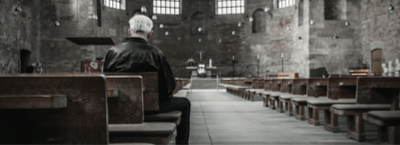Historical Overview of Heresies
Ruby CalebThe word “heresy” comes from the Greek ‘hairesis’ which means “choosing” or “faction. In the Christian context it refers to destructive teachings that contradict or distort biblical truths commonly called “orthodox theology”.
Heresy has plagued the church since its very beginning. Several New Testament Epistles were written to refute distortions that had crept in secretly. The Apostle Paul warned the elders at Ephesus of fierce wolves who would rise among them speaking twisted things, causing many to stray. He rebuked the Galatians for turning to a “different gospel” that relied on works rather than the gift of Jesus’ perfect righteousness as grounds for salvation.
For the Christian, the vital question in life is what Jesus asked Peter, “Who do you say I am?” The answer to that would make all the difference. Historically the most contentious arguments involved the person of
Jesus and the doctrines of the Trinity. The reason for such disagreements, let’s admit is the mystery and complexity that surrounds the wonderful person of Jesus. Most heresies either diminished His deity or denied His human nature. Jesus was either divine or human but not both.
Gnosticism, built on Greek philosophy was one such teaching. It believed the spirit was good while all matter was evil. The God of the Old Testament was evil too and different from the loving Father of the New Testament (Marcionism). Salvation was through secret knowledge, hence the name “Gnostic” meaning “to know”. Since all matter was evil, the Son of God could not come as a human. It adopted the Docetic view claiming Jesus merely appeared to be human but did not have a physical body. The crucifixion of Jesus hence was a case of mistaken identity. Since salvation was through secret knowledge, the atoning death of Christ
was not required. The ultimate spiritual reality then was to escape the evil body, making the notion of bodily resurrection contemptible. Gnosticism was confronted by Paul and John through the books of Colossians, 1& 2 John and later on by Apologist and theologian Irenæus. Ebionism (2nd – 5th) taught Jesus, the prophet was just a unique man, empowered by the Spirit of God for a special task.
Monarchianism arose in the 2nd century as an attempt to refute Tritheism (3 Gods). It affirmed the sole deity of the Father by rejecting the eternality and distinction of the 3 persons of the Godhead. Among them, the Adoptionists rejected Christ’s deity, teaching Jesus was a mere man adopted by the Father during his baptism. It further denied the divinity of the Holy Spirit. Sabellianism or Modalism, a third-century heresy affirmed Christ’s deity but held to the view that One God appeared in three separate modes; as Father in the Old Testament, then as Son (Redeemer) and later as the Holy Spirit. It was also called Patripassianism, meaning the Father suffered on the cross. Monarchianism was refuted by theologians such as Epiphanius and Tertullian.
The most destructive of these was Arianism (4th century) named after its founder, Arius, a priest at Alexandria. He denied the eternality and divinity of the Son claiming Jesus was only a created being. Famously known as “there was a time when the Son was not”, he argued that Jesus did not share the same divine essence as the Father. It was refuted by a young deacon Athanasius, and formally condemned by the Council of Nicea in AD 325 by declaring the Son as “homoousious” (of the same essence) with the Father. Arianism didn’t end with Nicea. Athanasius was later exiled five times in his persistent fight against its heretical teachings.
Nestorianism, a fifth century heresy divided the incarnate Christ into two distinct persons, one who was divine and one a human. It was combated by Cyril of Alexandria and condemned at the Council of Ephesus in 431. Eutychianism and Monophysitism on the contrary denied two natures in Christ asserting that Jesus’ human nature was swallowed up by His infinite divine nature. The Council of Chalcedon (451) with 600 Bishops settled the issue affirming Christ as one person with a fully divine and a fully human nature.
Despite these watershed moments in the history of the church, heresy still continues to grow. Disguised and repackaged, they appear under new names with new faces. Whether it’s the New Age Movement and Christian Science with its roots in Gnosticism or the modern equivalent of Arianism in the form of Unitarianism, Mormonism and Jehovah’s Witnesses; the threats faced from modern heresies are equally dangerous.
“If he cannot prevent the waters flowing from the Fountain of Life, he tries hard to poison them. If he cannot destroy the medicine of the Gospel, he strives to adulterate and corrupt it” J.C. Ryle
Some Lessons:-
•Biblical illiteracy and indifference to doctrine is the mother of all heresy. Build your foundations well.
•Heresies are often lies camouflaged with large measures of truth. Be alert, testing every spirit that you hear.
•One reason for error is the desire to say something new. Make every effort to stay within the boundaries of orthodoxy laid down by the early Church fathers.
•Remember most heretics were sincere leaders with good standing in the church. Be careful whom you listen to.
What then is the best safeguard against heresy? J.C.Ryle answers well, “the Bible: regularly read, regularly prayed over and regularly studied.” May we become people of the Book.

Ruby Caleb
Ruby is passionate about studying the Bible and working with children. She currently volunteers to teach underprivileged children in her community. Ruby worships at Bombay Baptist Church, Colaba. She is married to Caleb and they have a 6 year old son Daniel.








